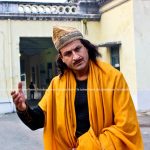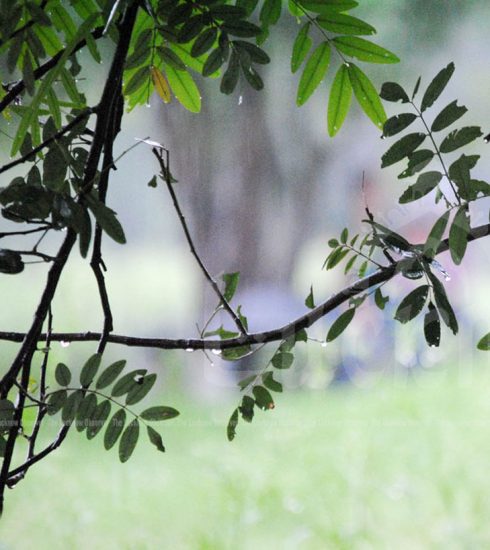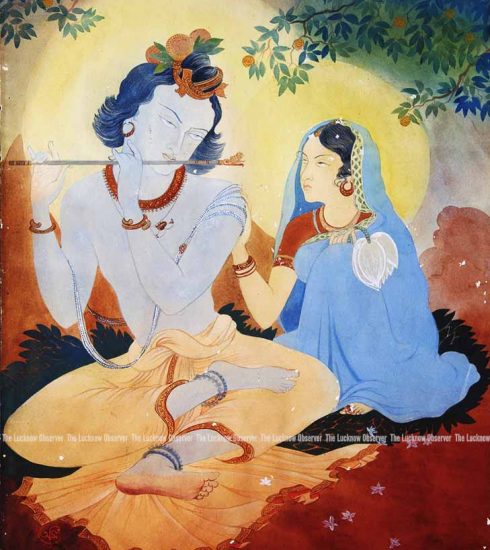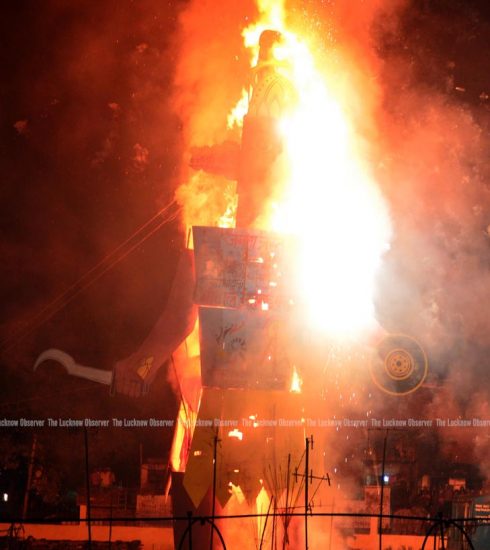How secular was my king…
Padma shri Shovana Narayan first came to Lucknow when she was 12 years old. Here the Delhi based Kathak danseuse wonders how utterly secular and inclusive Lucknow’s Nawab Wajid Ali Shah was in an exclusive essay for The Lucknow Observer
Even at that young age, I was captivated by the old world charm of this surrealist city. Its monuments, and the extremely polite and refined etiquette of people of the city remain engraved in my memory.
I had come from Bombay and the Urdu language, spoken so softly, in such a musical way had sounded delightful to the ear. I was familiar with the Haji Ali Dargah in Bombay but the Chhota and Bada Imambara introduced me to a whole new world of architectural beauty that does not use iron to support it.
I remember the ‘bhoolbhulaiyan’ or labyrinth and the ‘bauli’, or pond filled with water at the Bada Imambara. It was delightful to know from the guide that hidden passages under the ground had connected Lucknow to Faizabad and to Delhi and that the green tinted glass chandeliers were imported from Belgium. The bullet marks on the Residency, the history of the 1857 mutiny, the exile of Nawab Wajid Ali Shah and the revolt by Begum Hazrat Mahal, made a deep impression on my young mind.
I have been a student of Kathak since I was three years old, but only later did I become aware of the Lucknow gharana of Kathak. I was enchanted to hear about the patronage given to dance by the Nawabs of Awadh and of the founding of the Lucknow gharana of Kathak.
Personally, the city of Lucknow holds a special place in my heart because of its contribution to the world of dance and its spirit of cultural synthesis. Most modern day dance practice can trace its development to this city especially through the interest and contributions made to Kathak by Wajid Ali Shah, Lucknow’s last king.
My first and second gurus, Guru Sadhona Bose in Calcutta and Guru Kundanlal in Bombay introduced me to the basics of dance without reference to the different gharanas of Kathak. I first became aware of the gharanas in Delhi.
I was a student of Birju Maharaj at the Kathak wing of the Bharatiya Kala Kendra that later became the Kathak Kendra. There the contribution made by the different lineages of the various gharanas first entered my consciousness. It was through Birju Maharaj, the scion and torch bearer of the Lucknow Gharana that I developed a greater interest in and appreciation of the role of Lucknow’s culture and its impact on the Kathak dance form. My association with Lucknow gave me an insight into the importance of aesthetics in public life and personal behaviour. I was shown an entire canvas of understanding and misunderstanding related to historic figures like Nawab Wajid Ali Shah and Bindadin Maharaj and how the literary and operatic influence of the former and the verses of the latter impacted Kathak.
Golden Period
What I value most is the secular attitude of Wajid Ali Shah, a devout Shia Muslim. His verses and operas dedicated to Hindu deities, his own performance dressed as Lord Krishna and his patronage of great Kathak maestros of his era, all of whom were Brahmins, is a testimony to his deep appreciation of the other. Culturally, the brief rule of Wajid Ali Shah is considered to be the golden period of Lucknow as dancers, poets and musicians were held in high respect. A musician, poet and dancer, Wajid Ali Shah received training in Kathak as a ‘gandabandh shagird’ of Durga Prasadji, the illustrious son of the ‘kathak’ Prakashji Maharaj.
Opera or dance dramas and choreography were considered an innovative revolution in the 20th century and this happened during the rule of Wajid Ali Shah. More than 36 ‘rahas’ or productions, based on the ‘Rasleela’ and choreographed in Kathak style, were staged in Lucknow under his patronage and in which Wajid Ali Shah too had performed. His dance dramas “Indra Sabha” and the “ Jogiya Jashn” are only too well-known. Wajid Ali Shah’s interest in choreography is legendary, particularly in the placement of artistes on stage. For example he made shorter girls dance in the front row of his compositions. In the Indra Sabha, the artiste playing Lord Indra was made to stand behind the curtain till he was first introduced on stage. His entry was announced by the sound of drums and by the vibration of his bracelets. It became common practice to have Lord Indra appear on stage performing an ‘amad’ in Kathak style. Similarly, the main fairy or chief pari, is seen on stage only after appropriate music heralds her imminent entry. Once she has made her graceful entry, she is required to perform a ‘gat’ in Kathak style. This, according to Wajid Ali Shah’s instruction is followed by ‘abhinaya’ to a ‘thumri’ or a ‘chhand’.
From the vantage point of the 21st century, these principles and concepts are valid even in modern choreographic and musical compositions. Wajid Ali Shah had reflected progressive thoughts and innovation while remaining within tradition. Having learnt Hindustani classical music from some of the great maestros of his time, Wajid Ali Shah developed and evolved several new ragas such as ‘Jogi’, ‘Juhi’ and ‘Shah Pasand’. Being a gifted poet and secular at heart, he wrote several ‘thumris’ inspired by love between Radha and Krishna under the pen name of Akhtar Piya or Qadar Piya.
One of his ‘thumris’ in praise of Krishna goes O Gopal! You are the benevolent form of Ganesha, Vishnu and Shiva; my life and mind bows before you in devotion:
“Mohan rasiya aa ye bagiya, choom rahi ras kali kali re, koi kali Hari naam pukare, koi kali sun Ali Ali re”.
Another thought expressed by him is as follows:
“Karna nath Gajpat Hari, Harpat gajpat padpat gopal ‘Akhtar’ jan dil ke chain tumse, sach man laga hai Harilal”.
His poetry is a strong reflection of secular values in their reference to “Holi” or the Hindu festival of colour and ‘jhoola’, the festival of swing during the monsoon.
He wrote his most poignant lines when
he was forced to abdicate and to leave his beloved Lucknow after being exiled to Calcutta by the British in 1856. Wajid Ali Shah wailed in verse like a bride who must go away from her place of birth to another home after her wedding:
“Babul mora naihar chootto ri jaye”.
Lucknow Gharana
For the Physicist and researcher in me, Lucknow is a minefield of information on Wajid Ali Shah and Kathak. His two books ‘Banni’ and ‘Najo’ point out Kathak techniques and the ‘gat-nikas’ with illustrations. To Wajid Ali Shah and to well- known Kathak maestros of his time goes the credit for formalizing the ‘margi’ presentation in Kathak and for the unfolding of rhythmic movements and syllables, for the exposition of various limbs of ‘abhinaya’ and the final climax of collage of movements, footwork, pirouettes, rhythmic and music syllables like the ‘tarana’.
Such was the patronage extended by Wajid Ali Shah to the spread around Awadh of the elegance of speech and grace of living. The same splendour is noticed in Kathak as well in the ‘nritta’ sequences where pure rhythmic patterns of the Lucknow school stand out for their simple execution of precise movements of the feet, hand, waist, neck, wrists and torso. While emoting a ‘thumri’, the emphasis is on nuanced expressions and myriad interpretations of a single word or line. The element of ‘upaj’ or ‘improvisation’ both in the rhythmic field as well as in ‘abhinaya’ is perhaps the strongest in the Lucknow gharana of Kathak.
The delicacy and finesse with which ‘bhava’ or expression to a song is rendered through ‘nayan bhava’ or talking with the eyes and pupil, the ‘bol-bhava’or symbolic interpretations, ‘artha-bhava’ or interpretation of the meaning of the text in various ways, ‘nritya-bhava’ or using dance movements and patterns along with the interpretation, the’gat-artha-bhava’ where each movement and gait is used to convey a sentiment and the extent to which referential ‘avidha’ or metaphorical ‘lakshana’ and poetic or ‘vyanjana’ interpretations of the text are interpreted are the hallmarks of the Lucknow gharana of Kathak.
Shambhu Maharaj, father of Birju Maharaj was a dancer par excellence and champion interpreter of poetry. While enacting ‘mohe chhedo mat, jaane do Kanha’ or tease me not, let me go Krishna; he added fresh thoughts and emotions to the same line when he interpreted it as ‘mohe chhedo, mat jaane do Kanha’ or tease me, do not let me go Kanha, providing immense joy to his audience. According to a legend, Wajid Ali Shah once asked a gathering of poets, musicians and dancers how did they think, the maiden of the poet’s imagination had singed her palms?
Most gave routine answers like the maiden was probably inexperienced in the kitchen. It was young Bindadin, contemporary ‘kathak’ of Wajid Ali Shah who answered in verse. He said that due to her extreme modesty, the young bride had singed her palms while trying to cover the flame of the wick lamp with her hand as her husband disrobed her on the nuptial bed.
nai abala rasa reet na jaane, sej chaddhi jiya maahe dari,
rasa baat kahi, tab chonk pari, tab dahe ke kandhan baanh dhari,
in dono ke jhakjhoran mein, katinar pitambar toot pari,
kar deepak se tan dhaank liyo, jin kaaran sunder haath jali.
Wah!








